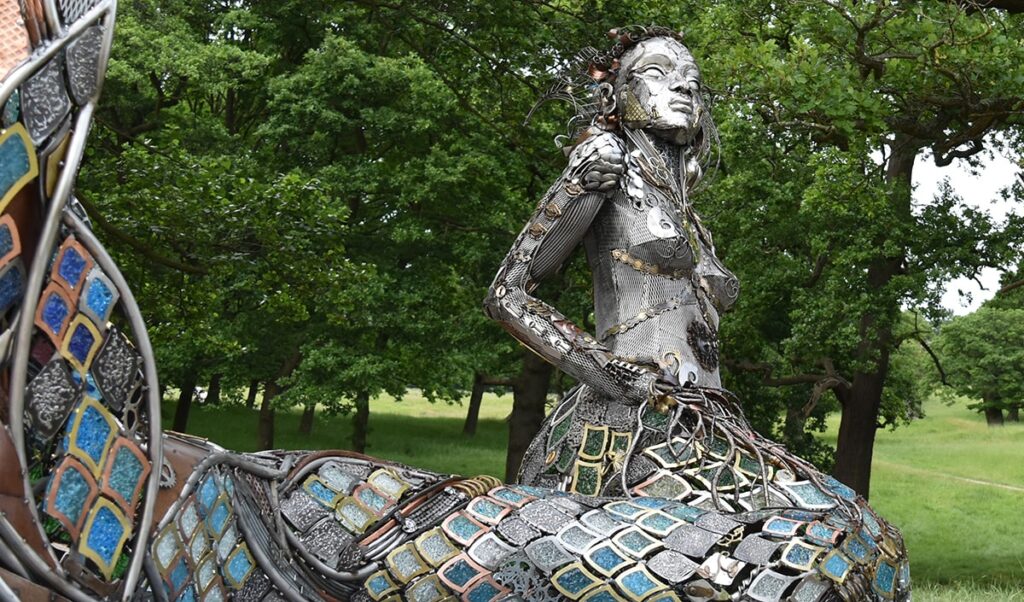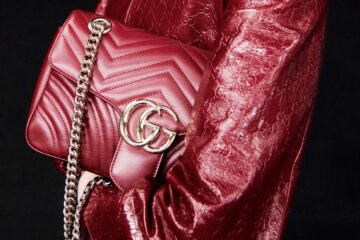Dana Albany Is An Artist Making Sculptures Out Of Bones And Books
In 1994, sculptor and installation artist Dana Albany attended Burning Man for the first time. Here, she discusses her latest exhibit and how a festival in the desert changed her life.
Until October 1, 2022, Chatsworth House in the UK is hosting Radical Horizons: The Art of Burning Man, at Chatsworth, a large-scale exhibition set in the 1,000-acre park surrounding the property. It brings together nine sculptures first exhibited at the festival that takes place annually in Nevada’s Black Rock Desert, as well as three new sculptures built on site.
It’s the first time the works have been on display in the UK, that they are free for all to access and have been paired with a larger program that collaborates with surrounding communities and leaves a creativity legacy for locals.
One of the artists exhibiting is Dana Albany, a sculptor and mixed-media artist based in San Francisco’s Bay Area, who found her footing in the art world by accident. “I was studying science and wanted to work for the Centers for Disease Control and Prevention, discovering diseases and their causes,” she says.
That all changed in 1994 when she attended Burning Man for the first time. “I was blown away by the creativity, spontaneity and engagement and this aspect that anyone could express themselves. So, the next year, I decided to make something.” That something was a sculpture of a camel, made of papier-mâché and pallets, so lifelike she describes how people would gravitate toward it.
Whether Albany is constructing a camel for the desert or the mermaid sculpture Coralee for display at Chatsworth, recycling is a constant that runs through her work. Bone Tree, her site-specific sculpture in Black Rock, was created in 1999 from bones collected from cattle ranches surrounding Black Rock City. It symbolizes the passage of time and pays homage to the precariousness of life.
Body of Knowledge, a large-scale sculpture of the human body, is another, constructed with dated textbooks and library books, symbolizing how the power of books, whether fact or fiction, make up who we are as people today. “Being young, broke and in the city, I gravitated toward recycled materials,” Albany says. She explains how creating the camel “opened my world to the possibility that you can create art out of anything and that you don’t need a lot of money. I love utilizing materials and giving them new life. Some hold so much symbolism, meaning and history, and it’s nice to carry that into the future.”
The mermaid at Chatsworth, created on-site with a crew that included Flash Hopkins, Heather Henderson and Kathy Richardson, continues this theme of repurposing material and is made from found objects like old keys, locks, bike gears, hinges and spoons collected locally by Chatsworth staff and families from the community.
When reflecting on working with young people, she references the famous Pablo Picasso quote, “Every child is an artist. The problem is how to remain an artist once we grow up,” saying how much she enjoyed the process.
“The [mermaid] scales are made from recycled bottles,” she continues. “There’s greens, blues and clears. They collected bottles of Bombay Sapphire Gin, Perrier, Pellegrino, and I love that there’s a very direct correlation between recycling and making art.”
Of the 12 pieces on display at Chatsworth, eight were existing sculptures and four were built on-site, mirroring the building process seen at Burning Man. Albany describes visiting Chatsworth as something akin to stepping into an oil painting. “The landscape was so rich and beautiful,” she continues. “The hills were lush and green from all the rain, and you’d walk through sheep to get to the workshop every morning.”
Other works at the house include Christina Sporrong’s The Flybrary, a 20-foot steel head with book-like birds flying from the top, Randy Polumbo’s Lodestar, which turns a World War II military jet into a contemplative flower, and Rebekah Waites’s Relevé, an installation inspired by the Nine Ladies Stone Circle, which is a Bronze Age archeological site close to Chatsworth House.
“I Love Utilizing Materials And Giving Them New Life. Some Hold So Much Symbolism, Meaning And History, And It’s Nice To Carry That Into The Future”
Having had her work exhibited at a number of galleries, Albany has pieces across the world and spends her time working on both public art exhibitions and private commissions. “There’s a nice balance,” she says. “You can have a one-to-one relationship with the client and watch something evolve without the red tape and paperwork you go through with public art, but that’s its own beauty.”
As well as celebrating the talent and creative spirit of Burning Man, the Chatsworth exhibition is a dedication to public art, something Albany believes is a necessity in our lives.
“It brings together humanity and says a lot about different cultures. It’s a way of expressing modern times but also past references. Can you imagine if there was no art? If the walls were completely white, how boring would that be? […] It’s such a wonderful preface to conversation and dialogue.”
www.danaalbanyart.com
@taramechani_digitaljourney
www.chatsworth.org
Interview by Estelle Zentil
























































































